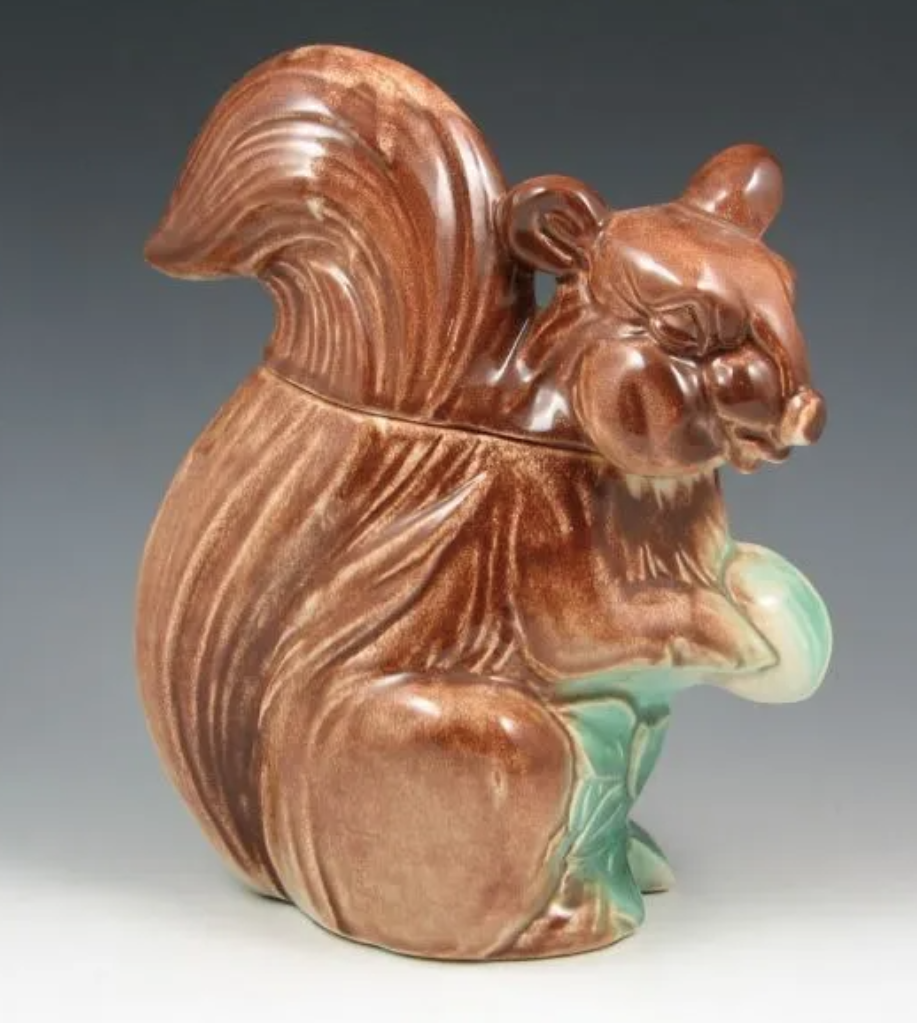
NEW YORK — Cookie jars are a feel-good collectible that encourage smiles and waves of nostalgia. While some people start collecting with the cookie jar they remember from visits to grandma’s house, there are thousands of styles available. Animal-form cookie jars are undeniably a favorite. Whatever bird or beast suits your fancy almost certainly exists in cookie jar form. Kittens and puppies abound, but a startlingly wide range of choices is available, including frogs, squirrels, turtles, horses, foxes, birds, bears, goats, mice, pigs and kangaroos.
Cookie jar production saw a manufacturing boom following both world wars. By the 1950s, people began to collect them in earnest, and each succeeding decade through most of the 20th century saw the formation of more collections. Pop artist Andy Warhol was a prominent fan; his collection of 175 cookie jars sold at Sotheby’s New York in 1988, bringing nearly $250,000.
Cam Curtis of Clemson, South Carolina has long been a collector of cookie jars. He has also been a cookie jar dealer and, during the 1980s and 1990s, a cookie jar maker as well. His collection of more than 1,000 jars includes many that take the forms of animals. “Probably the best known animal cookie jar is called Smiley, a jar portraying a smiling pig made in the mid-1900s by a company named Shawnee,” he said, adding that Smiley’s female cookie jar mate is named Winnie. “Collectors for 70 years have sought these jars. They are decorated in a wide variety of configurations, colors and decals.” A trio of Smiley cookie jars made by Shawnee and auctioned in November 2013 shows the color variations in the pig’s bandana. The set earned $400 plus the buyer’s premium at Conestoga Auction Company, a Division of Hess Auction Group. Shawnee was based in Zanesville, Ohio — a pottery hotbed — and Shawnee was one of the town’s most prolific companies.
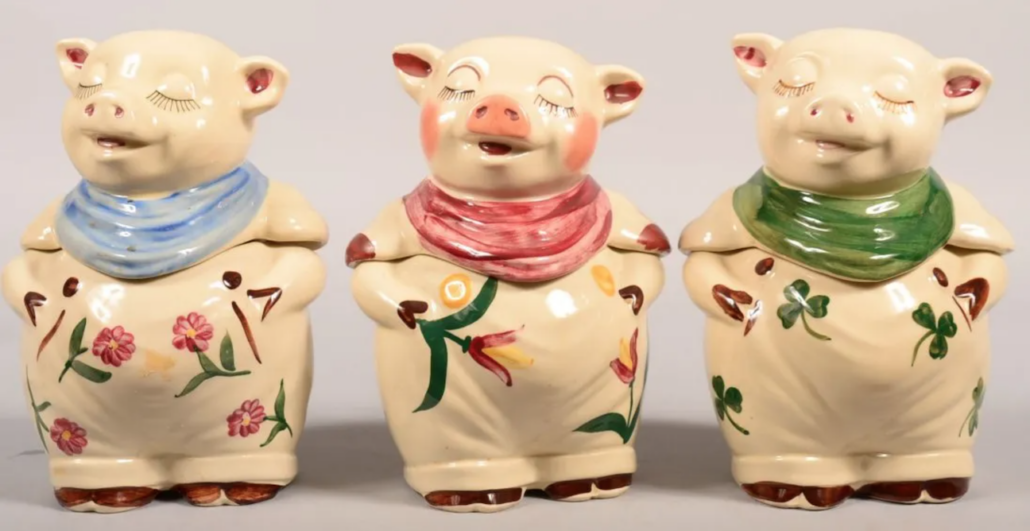
The two largest producers of cookie jars were Ohio’s Nelson McCoy Pottery Company and American Bisque in Williamstown, West Virginia, both of which started making cookie jars in the 1930s. One of American Bisque’s most popular animal jars is its Sitting Horse, and one of McCoy’s is known as Mac Dog.
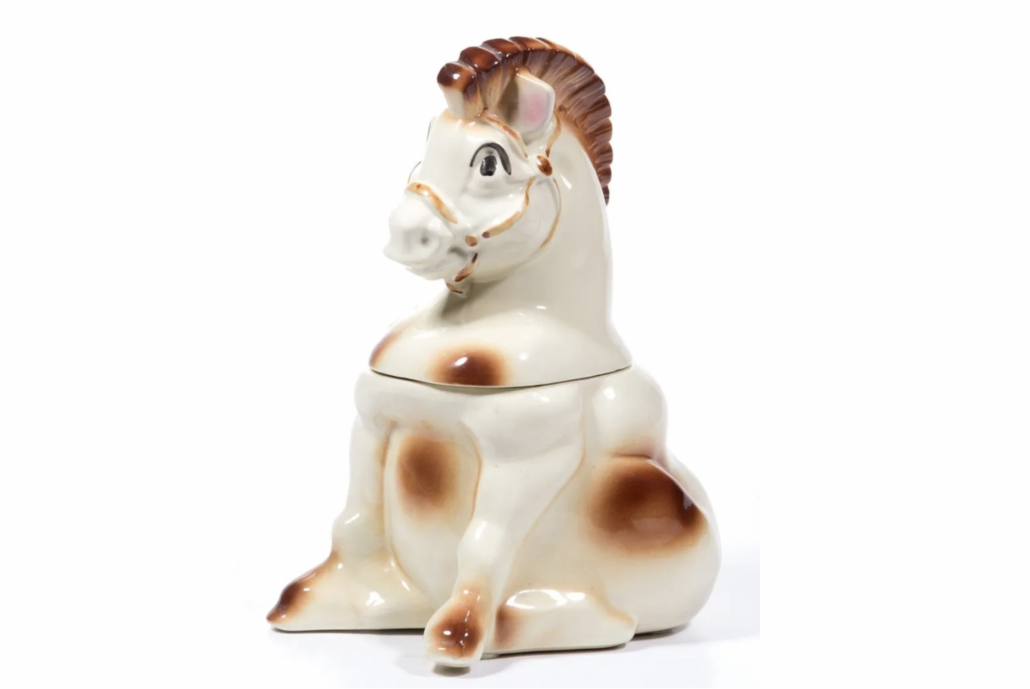
Cookies jars were popular for decades, but owing to increased competition from overseas manufacturers and changing tastes in home design, American Bisque was sold in the 1980s and McCoy closed permanently in 1991.
Vintage examples are highly sought after for their craftsmanship and charm, which is often lacking in the mass-produced cookie jars made today. Wise collectors teach themselves what authentic period pottery looks and feels like, as there are companies issuing reproduction cookie jars that mimic period examples by McCoy and others.
McCoy made cookie jars that resembled all types of cute critters. A mint-condition red squirrel jar with a hint of aqua coloring earned $4,000 plus the buyer’s premium in November 2010 at Belhorn Auctions, LLC.
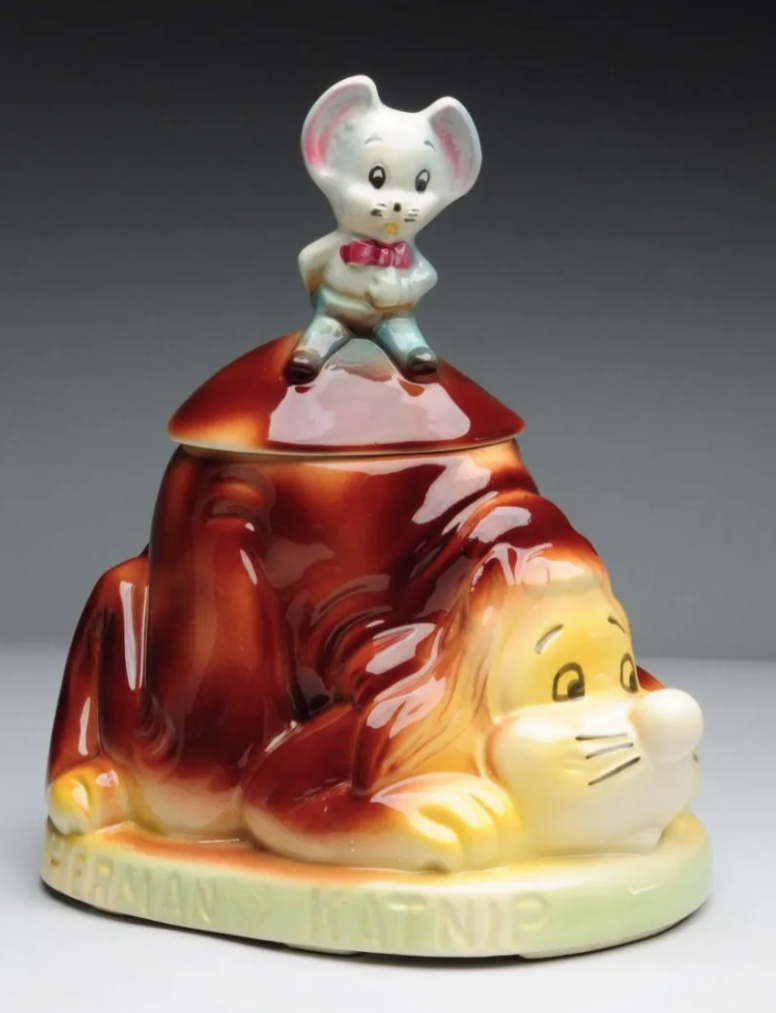
American Bisque created a number of cookie jars based on comic book characters, such as a Herman and Katnip jar that attained $1,500 plus the buyer’s premium in November 2015 at Dan Morphy Auctions. Herman, the mouse, and Katnip, the cat, starred in Harvey Comics and animated cartoons throughout the 1950s.
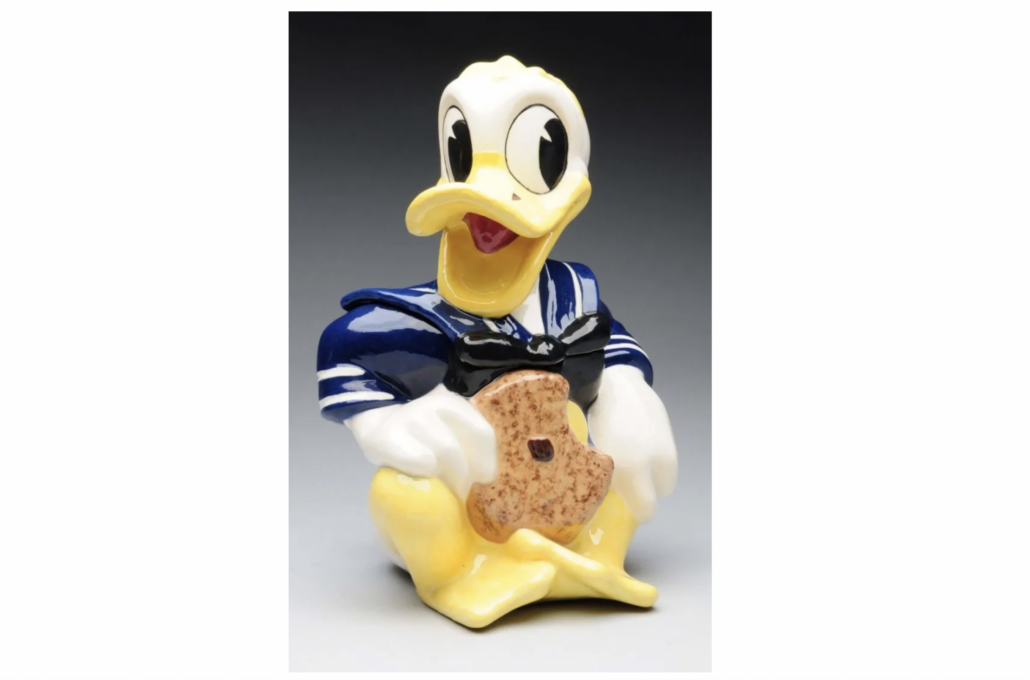
Two other notable producers of animal cookie jars were Brush Pottery, an Ohio concern, and Metlox, which was located in California. “Brush jars are highly desirable and expensive: popular jars are Puppy Police and Stylized Cat,” Curtis said. Brush alone made more than 50 examples of novelty cookie jars. Puppy Police, represented here by an example from Curtis’s personal collection, was issued in 1966.

Metlox reportedly began making cookie jars in 1947 and continued until it closed in 1989. Some of its most popular animal-form cookie jars are its Flash turtle and its Basset Hound. “The wide variety of animal styled jars produced makes choosing a favorite an individual choice,” Curtis said. The Flash turtle from Curtis’s collection has a butterfly on its shell that serves as a handle to lift the cookie jar lid.

Another California company founded in the 1930s was Twin Winton, so named because the founders were twin brothers, Don and Ross. The brothers did freelance work for other potters and made their own cookie jars from the 1950s onward. Don Winton sculpted some 15,000 designs, including cookie jars for more than 20 different potteries, Curtis noted. Several of its most highly desirable jars include designs dubbed Pirate Fox, Gunslinger Rabbit, Donkey and Squirrel.
Vintage cookie jars have been recognized as a 20th-century decorative art form. One of the most famous collectors was Andy Warhol, whose 250-jar assemblage sold posthumously for $250,000 at a 1987 Sotheby’s sale.
With more than 10,000 designs available, many of them depicting animals, a collector can have endless fun amassing their own personal pottery menageries.


